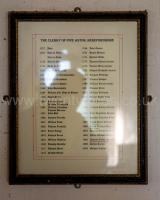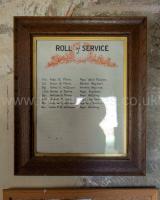Text this colour links to Pages. Text this colour links to Family Trees. Text this colour are links that are disabled for Guests.
Place the mouse over images to see a larger image. Click on paintings to see the painter's Biography Page. Mouse over links for a preview. Move the mouse off the painting or link to close the popup.
All About History Books
The Deeds of King Henry V, or in Latin Henrici Quinti, Angliæ Regis, Gesta, is a first-hand account of the Agincourt Campaign, and subsequent events to his death in 1422. The author of the first part was a Chaplain in King Henry's retinue who was present from King Henry's departure at Southampton in 1415, at the siege of Harfleur, the battle of Agincourt, and the celebrations on King Henry's return to London. The second part, by another writer, relates the events that took place including the negotiations at Troye, Henry's marriage and his death in 1422.
Available at Amazon as eBook or Paperback.
St Giles' Church, Pipe Aston is in Pipe Aston, Herefordshire, Churches in Herefordshire.
The painted interior of St Giles' Church, Pipe Aston [Map] which was discovered during restoration in 1879.
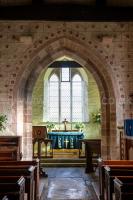
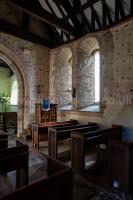
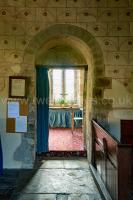
The Herefordshire School of Carving at St Giles' Church, Pipe Aston [Map]. Tympanum over the North doorway. An "agnus dei" - Lamb of God - flanked by a winged eagle and a winged bull surrounded byan archivolt of animals and foliage enclosed within a chevroned arch. The church guide describes the eagle as the emblem of St John complementing the winged bull emblem of St Luke which has at the end of one of its forelegs a block that is assumed to be St Luke's Gospel. Malcolm Thurlby, in this excellent book "The Herefordshire School of Romanesque Sculpture" suggest the carving is of a griffin. The imposts at the end of the arches have, on the left, dragons entwined, and, on the right, foliage. See Herefordshire School of Carving.



2009. The clergy and Roll of Service at St Giles' Church, Pipe Aston [Map].
